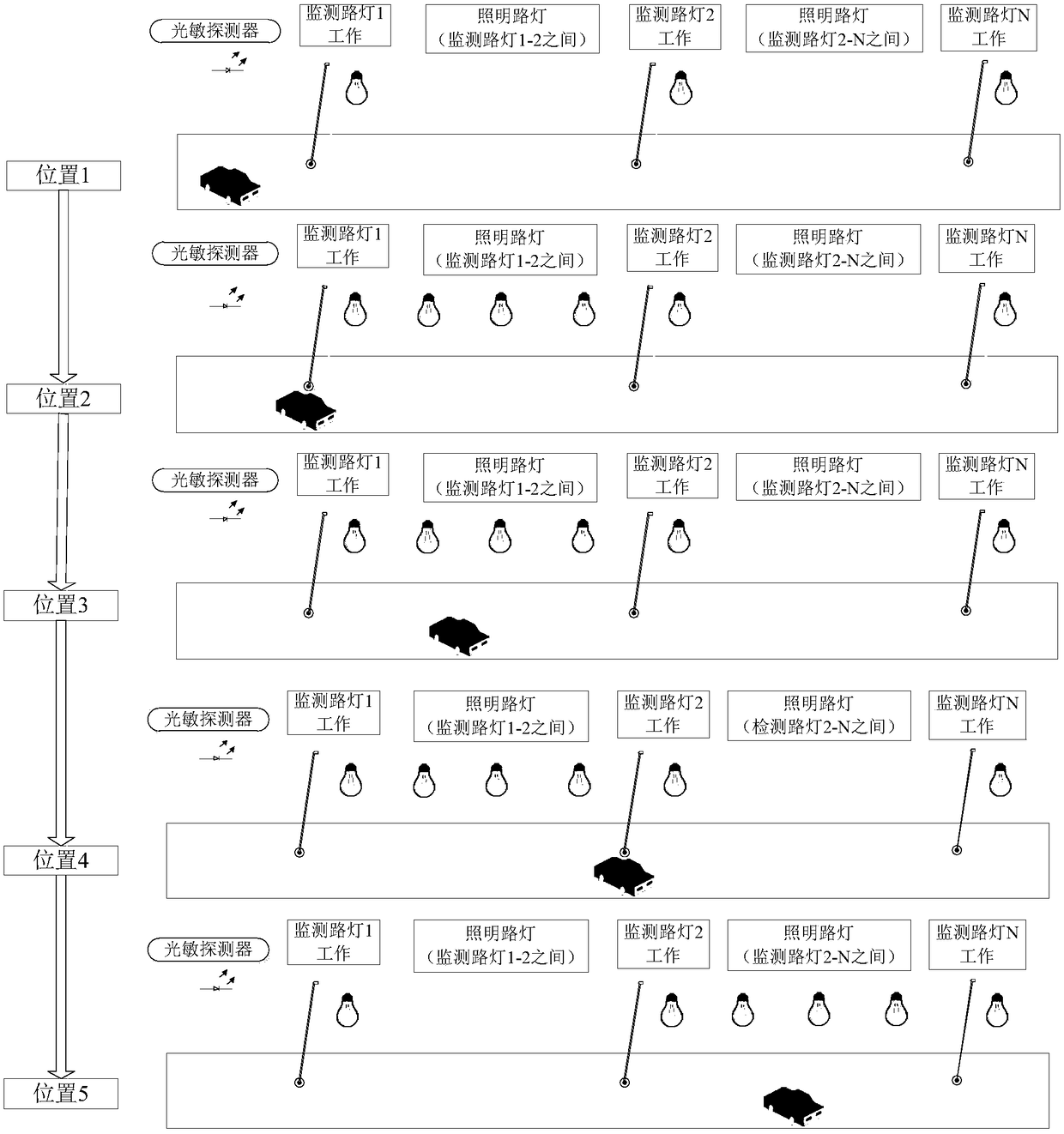Method, device, equipment and medium for controlling starting and stopping of streetlamp
A technology for street lamps and lighting street lamps, which is applied in the electronic field and can solve problems such as power waste
- Summary
- Abstract
- Description
- Claims
- Application Information
AI Technical Summary
Problems solved by technology
Method used
Image
Examples
Embodiment 1
[0093] This embodiment provides a method for controlling the turning on and off of street lamps, such as figure 1 shown, including:
[0094] Step S101, acquiring the light intensity value of the first monitored street lamp.
[0095] The monitoring street lamp in this embodiment is used for monitoring information and controlling the turning on and off of the street lamp, wherein the street lamp in this embodiment includes monitoring street lamps and lighting street lamps, wherein the so-called lighting street lamps are only other street lamps that are different from monitoring street lamps. Monitoring street lights can be installed with devices or equipment for monitoring and sending and receiving information, such as photosensitive detectors, radar, ultrasonic, infrared, traffic detectors, cameras, control circuits, wireless transceivers, etc. In step S101, the light intensity value can be monitored in real time through the photosensitive detector of the first monitoring stre...
Embodiment 2
[0134] This embodiment provides a street lamp control device, such as figure 2 As shown, the device includes:
[0135] An acquisition unit 201, configured to acquire the light intensity value of the first monitored street lamp;
[0136] A comparing unit 202, configured to compare the light intensity value with a preset threshold;
[0137] The acquisition unit 201 is further configured to acquire first traffic flow information if the light intensity value is lower than the threshold value, and the first traffic flow information is marking information for marking vehicles passing the first monitored street lamp;
[0138] The judging unit 203 is configured to judge whether to turn on the lighting street lamp between the first monitoring street lamp and the second monitoring street lamp according to the first traffic flow information, and the second monitoring street lamp is the next one of the first monitoring street lamp monitoring street lights;
[0139] The sending unit 20...
Embodiment 3
[0149] This embodiment provides an electronic device 600, such as Figure 6 As shown, it includes a memory 610, a processor 620, and a computer program 611 stored in the memory 610 and operable on the processor 620. When the processor 620 executes the computer program 611, any implementation manner in the first embodiment can be realized.
[0150] Since the electronic device introduced in this embodiment is the device used to implement the method in Embodiment 1 of this application, based on the method described in Embodiment 1 of this application, those skilled in the art can understand the electronic device of this embodiment. Specific implementation methods and various variations thereof, so how the electronic device implements the method in the embodiment of the present application will not be described in detail here. As long as a person skilled in the art implements the equipment used by the method in the embodiment of the present application, it all belongs to the prote...
PUM
 Login to View More
Login to View More Abstract
Description
Claims
Application Information
 Login to View More
Login to View More - R&D
- Intellectual Property
- Life Sciences
- Materials
- Tech Scout
- Unparalleled Data Quality
- Higher Quality Content
- 60% Fewer Hallucinations
Browse by: Latest US Patents, China's latest patents, Technical Efficacy Thesaurus, Application Domain, Technology Topic, Popular Technical Reports.
© 2025 PatSnap. All rights reserved.Legal|Privacy policy|Modern Slavery Act Transparency Statement|Sitemap|About US| Contact US: help@patsnap.com



